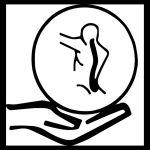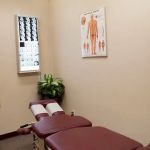
- 1 - Understanding Sciatica: Causes and Symptoms
- 2 - Treatment Options for Sciatica: What Works?
- 3 - Why Chiropractors Recommend Certain Treatments for Sciatica
- 4 - Natural Remedies for Sciatica Relief
1 - Understanding Sciatica: Causes and Symptoms
Sciatica refers to pain that radiates along the sciatic nerve, which runs from the lower back down to the legs. It's one of the most common causes of leg pain, often associated with a pinched nerve in the spine. This condition can occur due to several factors such as a herniated disc, spinal stenosis, or degenerative disc disease.
1.1. Common Symptoms of Sciatica
The main symptom of sciatica is pain that spreads from the lower back or buttocks down one leg. The pain can vary from mild to severe, and it may be accompanied by numbness, tingling, or muscle weakness in the affected leg. In severe cases, the pain can become chronic and debilitating, affecting daily activities.
1.2. Causes of Sciatica
Sciatica is typically caused by a compression of the sciatic nerve, often due to a herniated disc or bone spur pressing against the nerve. Other causes include spinal stenosis, which narrows the spinal canal, and spondylolisthesis, where one vertebra slips over another, putting pressure on the sciatic nerve.
2 - Treatment Options for Sciatica: What Works?
Treating sciatica depends on the severity of the pain and the underlying cause. For many individuals, conservative treatments can provide relief, while others may require more advanced interventions. Below are some of the most common treatment options for sciatica:
2.1. Non-Surgical Treatments
Most people with sciatica can recover with non-surgical treatments, such as:
- Physical therapy: Strengthening the muscles that support the spine can alleviate pressure on the sciatic nerve.
- Medications: Over-the-counter pain relievers, anti-inflammatory drugs, and muscle relaxants can reduce pain and inflammation.
- Heat and ice therapy: Alternating between hot and cold packs can help reduce pain and inflammation.
2.2. When Surgery is Necessary
If conservative treatments fail, surgery may be recommended. This is typically reserved for cases where the nerve compression causes severe pain or neurological symptoms like weakness or loss of bladder control. Surgical options include discectomy (removal of a portion of a herniated disc) or laminectomy (removal of part of the vertebra to relieve pressure on the nerve).
3 - Why Chiropractors Recommend Certain Treatments for Sciatica
Chiropractors play a critical role in managing sciatica by helping to restore spinal alignment and reduce nerve compression. Chiropractic care is a non-invasive and effective approach to treating sciatica. Here’s why chiropractors recommend certain treatments:
3.1. Spinal Adjustments
Chiropractors often use spinal adjustments to help relieve pressure on the sciatic nerve. These adjustments aim to realign the spine, improve movement, and reduce inflammation. By doing so, they help alleviate pain and prevent the condition from worsening.
3.2. Non-invasive Pain Management
Chiropractors prioritize non-invasive pain management strategies. This includes using therapies like heat and cold therapy, as well as recommending specific stretches and exercises to help patients manage their pain without relying on medication or invasive procedures.
3.3. Preventive Care
Chiropractors also emphasize preventive care by advising on posture, ergonomics, and lifestyle changes that can prevent future flare-ups of sciatica. Proper body mechanics and strengthening exercises can help prevent additional nerve compression and enhance overall spinal health.
4 - Natural Remedies for Sciatica Relief
In addition to professional treatments, several natural remedies may help alleviate sciatica pain. While these remedies don’t replace professional care, they can be used alongside other treatments to manage symptoms and promote healing.
4.1. Yoga and Stretching
Gentle yoga and stretching exercises can improve flexibility, reduce muscle tension, and alleviate pressure on the sciatic nerve. Specific yoga poses such as the pigeon pose and the child’s pose can be particularly beneficial for sciatica relief.
4.2. Massage Therapy
Massage therapy can help relax tight muscles and relieve pressure on the sciatic nerve. Therapeutic massage may improve circulation, reduce inflammation, and promote overall relaxation, helping manage sciatica symptoms.
4.3. Herbal Remedies
Certain herbs, such as turmeric and ginger, have anti-inflammatory properties that may help reduce pain and inflammation associated with sciatica. Always consult a healthcare professional before using herbal remedies to ensure they’re safe and appropriate for your condition.
Conclusion
Sciatica can be a painful and disruptive condition, but with the right treatments, many people find relief. Chiropractors are often instrumental in helping patients manage their sciatica through non-invasive treatments like spinal adjustments and physical therapy. By combining professional care with natural remedies, individuals can alleviate pain, improve mobility, and prevent future flare-ups of sciatica. If you’re experiencing sciatica, consider exploring chiropractic care and other treatment options for lasting relief.







 Health Centered Medical | A Knee, Back, & Joint Pain Clinic5.0 (173 reviews)
Health Centered Medical | A Knee, Back, & Joint Pain Clinic5.0 (173 reviews) Crest Hill Clinic Ltd4.0 (9 reviews)
Crest Hill Clinic Ltd4.0 (9 reviews) Awaken Chiropractic5.0 (7 reviews)
Awaken Chiropractic5.0 (7 reviews) Michael Baremboym, Chiropractor - Advanced Chiropractic Health Care4.0 (23 reviews)
Michael Baremboym, Chiropractor - Advanced Chiropractic Health Care4.0 (23 reviews) Chicago Wellness Center5.0 (39 reviews)
Chicago Wellness Center5.0 (39 reviews) Shahrestani Babak R DC5.0 (1 reviews)
Shahrestani Babak R DC5.0 (1 reviews) How to Relieve Posture Correction Without Medication – Chiropractor Approved
How to Relieve Posture Correction Without Medication – Chiropractor Approved The Science Behind Chiropractic and Natural Pain Management Relief
The Science Behind Chiropractic and Natural Pain Management Relief 10 Things You Should Know About Improving Mobility with Chiropractic Care
10 Things You Should Know About Improving Mobility with Chiropractic Care Can Chiropractic Care Solve Your Chiropractic for Athletes Problem?
Can Chiropractic Care Solve Your Chiropractic for Athletes Problem? The Truth About Chiropractic and Mental Health and What Chiropractors Recommend
The Truth About Chiropractic and Mental Health and What Chiropractors Recommend The Science Behind Chiropractic and TMJ: How Chiropractic Relief Can Help
The Science Behind Chiropractic and TMJ: How Chiropractic Relief Can Help